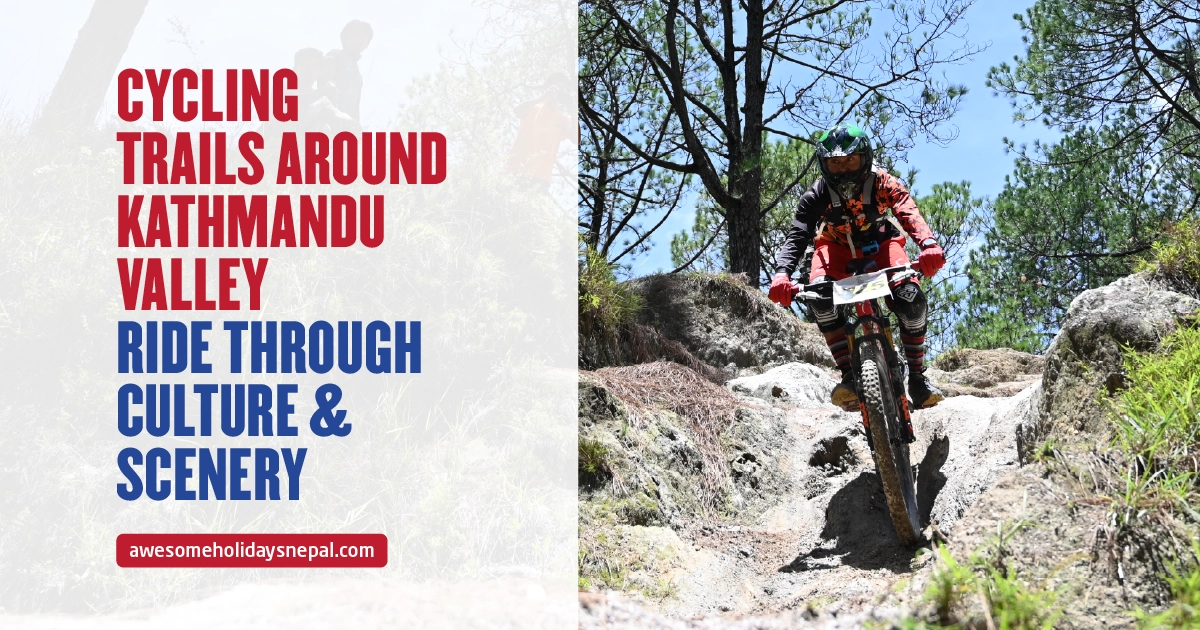Climbing Ama Dablam: Everything You Need to Know
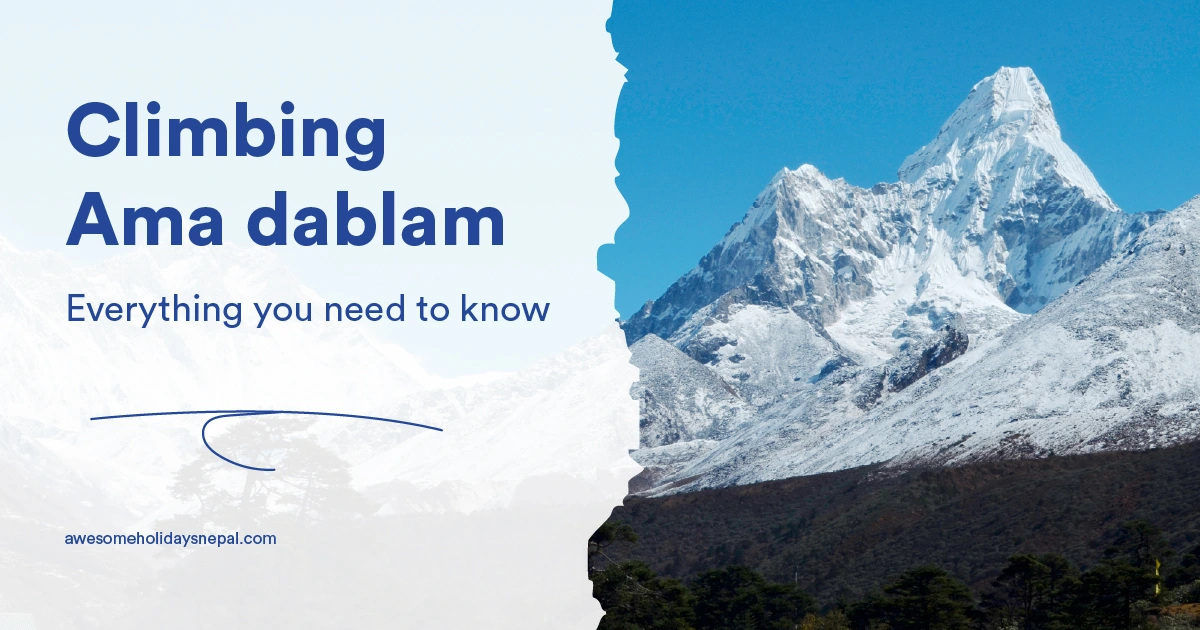
Ama Dablam is one of the most stunning mountains in the world. The mountain resides in the eastern Nepalese Himalaya range and is a daunting peak at an elevation of 6,812 meters (22,349 ft). The peak is a famous mountaineering destination among mountaineers and is also known as “Mountaineers Mountain.” So, climbing Ama Dablam is a dream for many adventurers.
Ama Dablam, called the “Matterhorn of the Himalayas,” is more than just a mountain; it’s a climber’s dream, an artist’s muse, and a spiritual experience. The name Ama Dablam means Mother’s Necklace, as the long ridges on each side are like the arms of a mother (ama) protecting her child, and the hanging glacier is thought of as the Dablam, the traditional double pendant containing pictures of the gods, worn by Sherpa women.
The stunning peak is among the most technical and challenging climbs on Earth. The climb will definitely challenge the mettle of all the mountaineers. It is a tale of a summit alluring for its exposure and raw aesthetic beauty.
So, if you’re ready for this exhilarating challenge, let’s explore everything you need to know to climb Ama Dablam.
Ama Dablam: Mountaineers Mountain
Ama Dablam was first successfully summited on March 13, 1961. It is one of the most technically difficult peaks in the world, but it still stands out as a popular destination for ascent. Interestingly, the mountain is featured on the 500-rupee Nepalese banknote.
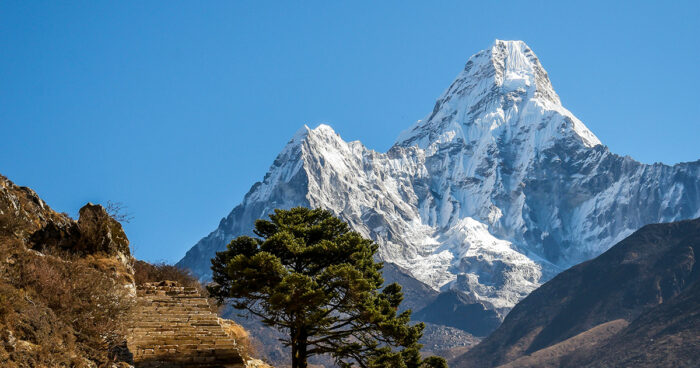
The Ama Dablam Expedition commences with a trek through the Khumbu Valley, where prayer flags flutter against snow-capped peaks. Similarly, you will be welcomed with warmth in villages like Namche Bazaar. As you approach Ama Dablam Base Camp, the mountain unveils its iconic Southwest Ridge, the route most climbers follow.
With each step, you get to witness the Yellow Tower, cross the awe-inspiring Dablam Glacier, and more.
Ideal Time to Climb Mount Ama Dablam
Before climbing any mountain, the ideal climb time is very important. Although Ama Dablam’s ascent is possible throughout the year, the ideal times to climb it are Autumn (September-November) and Spring (April-May).
Autumn is the most popular season for climbing, as the weather is stable, and the skies are crystal clear. The post-monsoon air is crisp, the views are impeccable, and the Khumbu Valley buzzes with trekkers and climbers. The vibrant autumn foliage adds a touch of magic to the landscapes.
Likewise, Spring also offers a quieter climb, with fewer adventurers on the trails. Though snow conditions can be more challenging, the freshly fallen snow amplifies the mountain’s ethereal beauty. Spring’s charm lies in its solitude and the blooming rhododendrons dotting the trails.
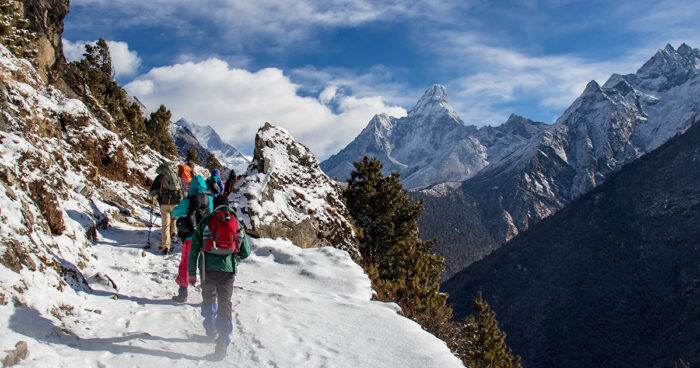
Are You Ready? Physical and Technical Challenges
Whenever you think about climbing a mountain, you need to be prepared and have determination at heart. Obviously, Ama Dablam also demands more than physical endurance; you need technical mastery and mental resilience. It would be best if you were fully prepared and ready in advance for the climb.
What to do and how to be prepared?
Before going for the ascent, the first and foremost thing you need to prepare is all the paperwork and permits necessary for the climb. So, you should focus on getting the paperwork needed to get to the top of the mountain, as it is a crucial step to obtain permits and documentation.
To climb the mountain, you need three permits. First, you should get the TIMS (Trekker’s Information Management System) Card. Then, you need the climbing permit, which is required for any Himalayan expedition in Nepal. Additionally, you should get a permit to enter the Sagarmatha National Park. Now, you are finally set for the climb with these permits and paperwork.
Physical Fitness/Technical Challenges
Climbing Ama Dablam is a test of physical and mental endurance. The mountain demands top-notch fitness and preparation. One needs to be ready for long climbing days, so build strength and stamina and do cardiovascular training.
You’ll need to combine strength, stamina, and technical skill to conquer its steep ridges and icy cruxes. To build endurance, it would be best to incorporate vigorous cardio like trail running, stair climbing with weights, and cycling.

Be familiar with fixed ropes, ice axes, and crampons, as this route tests your rock and ice climbing abilities. Learn rope techniques, including rappelling and rope management.
Yoga and aerobic exercises can enhance flexibility and breathing control, which are vital for high-altitude conditions.
It would be best if you had prior experience climbing mountains. This climb is tailored for experienced mountaineers. High-altitude climbing and technical proficiency are non-negotiable, as they ensure your safety on the mountain’s intricate terrain. So, it is best that you engage in regular hikes or high-altitude treks to acclimate your body to the thin Himalayan air.
Packing for the Peak: Essential Gear
We need every piece of essential gear to climb a mountain. Due to the trekking difficulty of the Ama Dablam, all trekkers are recommended to pack essential climbing gear for this journey, such as an ice axe, crampons, a helmet, a harness, and carabiners.
You need to bring layered clothing, including base layers, a waterproof shell, an insulating fleece, a down parka, and more.
Sturdy mountaineering boots, trekking poles, and a 65-liter backpack are also crucial. Camping necessities include a high-altitude sleeping bag, sleeping pad, and personal tent.
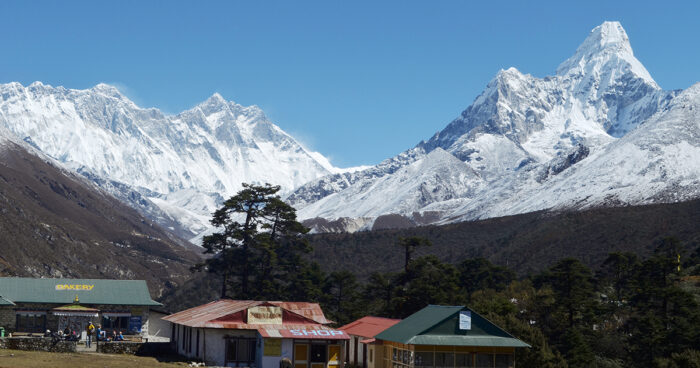
Oh, and never forget necessities like sun protection, a headlamp, water purification tablets, and a first-aid kit. Personal items like toiletries, waste bags, and important documents (passport, visa, permits) are also vital. Packing smart ensures a safer and more comfortable climb.
Hydration and Foods
To conquer any peak, you should have proper hydration and nutrition. You need to drink an ample amount of water and stay hydrated. Consider bringing hydration tablets or filtration bottles. Meals are prepared in tea houses, and on climbing days, kitchen tents are set up with packed dried meals as a backup.
Eating enough at high altitudes can be tough but vital for your energy and strength. Avoid smoking and alcohol to protect your health and ensure the best performance at altitude. Stay hydrated, fueled, and focused to maximize your climb!
The Ama Dablam Expedition Itinerary

Here’s what an itinerary for climbing Ama Dablam with a successful ascent looks like:
Take on a Transformative Journey
So, these are the things you need to know about the Ama Dablam ascent. You need to remember that climbing Ama Dablam is a transformative journey and not just a physical challenge.
This “Matterhorn of the Himalayas” offers an unforgettable experience for the climbers and will be a part of your life. Climbing any mountain requires proper preparation, physical fitness, motivation, and essential gear. And you will be rewarded with amazing views at the top of the mountain.
What do you think? Are you ready for a new adventure and to test your limits? The stunning Ama Dablam awaits your ascent. Carry your gear, go for this amazing journey, and etch this tale into your heart.
FAQs
Expand AllWhat is the height of Ama Dablam?
Ama Dablam is situated at an altitude of 6,812 meters (22,349 feet) and offers some of the best views of some of the world’s tallest peaks such as Mt. Everest, Lhotse, Makalu, and more.
How long does it take to climb Ama Dablam?
It normally takes around 25 to 32 days to climb the Ama Dablam.
What are the permits necessary for the Ama Dablam climb?
You need to get three different permits for the Ama Dablam climb such as a TIMS card, a climbing permit, and a Sagarmatha National Park entry permit.
What is the ideal time to climb Ama Dablam?
The best time to climb Ama Dablam is Autumn (September to November) and Spring (April to May) seasons.
How technical is Ama Dablam?
Ama Dablam is considered to be a moderately technical climb as it has steep rock, mixed sections and ice.
What is the success rate of Ama Dablam?
The success rate of Ama Dablam for climbers is between g0 percent to 75 percent.
What is the age limit for climbing Ama Dablam?
The age limit for climbing Ama Dablam is 16 years old. There is no upper age limit as llong as one is healthy.
Related blog posts
Discover a choice of tourist destinations loved by most of our visitors. Whether you're on a jungle safari to spot rare animals or walking through a world heritage site, these well-planned itineraries cover the major highlights of Nepal.



